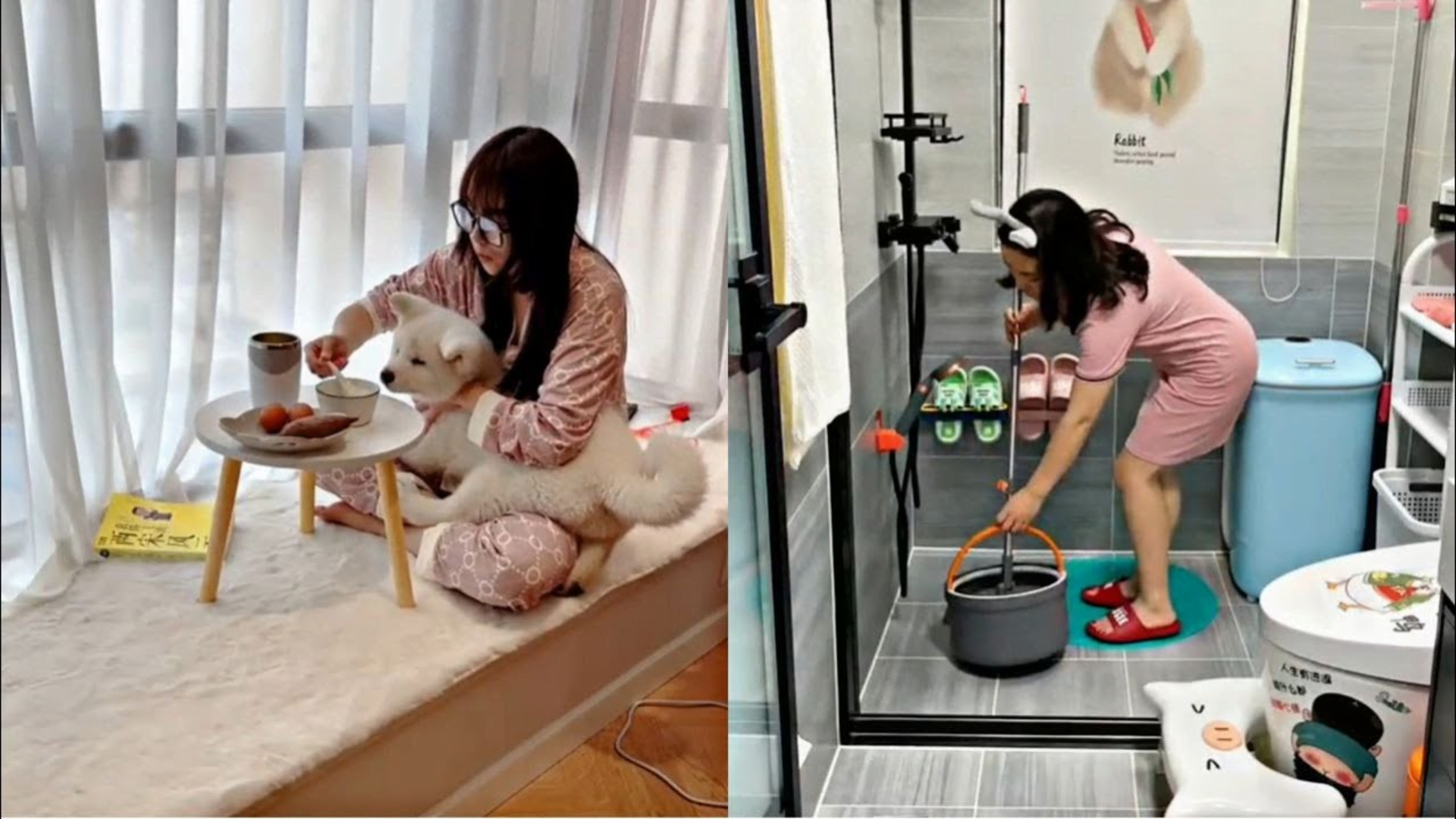It’s 11 pm as I lie in bed, my body about to shut down completely for the required eight hours, but my mind is pacing at break-neck speed through things done and not done — yet another endless and futile zoom call, some precariously close work deadline, a cobweb in the bedroom which needs cleaning, and an overflow of unread WhatsApp messages and emails on my phone.
I’m watching an ASMR house-cleaning video by the South Korean YouTuber Hamimommy, waiting for it to soothe my mind and help me drift to sleep. It seems a typical hectic-weekday ritual for me and millions of others across the world.
These Asian homemakers mean business.
Hamimommy, Honeyjubu, Her86m2, Nyangsoop, and Haegreendal, are just some of the most followed silent vloggers on YouTube, with millions of subscribers and a very dedicated fan base across the world. Most of these YouTubers are South Korean or Japanese and make even the most mundane chores, like washing vegetables or folding clean laundry, look stunning through expert camera work and running commentary (subtitles) to create an ASMR effect.
Watching them go about their daily chores in such an effortless and mechanical way reminds me of the burden of women’s unpaid labour in our society. What these vloggers record is exactly what millions of women around the world do every single day off-camera. And we’re not talking about just the basic cooking-cleaning-washing errands; there are categories of chores and sub-chores that wives and mothers are just expected to complete with panache in a cis-heteronormative family structure.
Watching them go about their daily chores in such an effortless and mechanical way reminds me of the burden of women’s unpaid labour in our society. What these vloggers record is exactly what millions of women around the world do every single day off-camera. And we’re not talking about just the basic cooking-cleaning-washing errands; there are categories of chores and sub-chores that wives and mothers are just expected to complete with panache in a cis-heteronormative family structure.
Like cutting fruits in cute shapes to make them more appealing to the family, planning elaborate weekend activities to keep the children occupied, using a bevvy of concoctions and homemade remedies to clean utensils to perfection, and so on and so forth.
But what is really interesting is how these enterprising Asian vloggers have found a unique way to be ‘reimbursed’ for all their work through social media. Most of them have amassed over a million subscribers in the last couple of years and have managed to turn their unpaid labour into a source of huge revenue, earning through ad spends and collaboration with brands.
In fact, it’s highly likely that some of them earn more than their so-called “working” husbands in this hyper-digital marketing era where brands are ready to spend big bucks on influencer associations.
Women’s free labour in our society
According to a report by Oxfam, the value of women’s unpaid labour stands at more than $10 trillion dollars! No matter how many hours a woman spends on cleaning, cooking, or perfecting her home, the work is not taken into account in discussions of the GDP. While more and more women have started joining the workforce, not much has changed when it comes to the distribution of household chores.
But what is really interesting is how these enterprising Asian vloggers have found a unique way to be ‘reimbursed’ for all their work through social media. Most of them have amassed over a million subscribers in the last couple of years and have managed to turn their unpaid labour into a source of huge revenue, earning through ad spends and collaboration with brands.
According to a UN report, “data from 38 countries confirm that both women and men have increased their unpaid workloads in the post-pandemic era, but women are still doing the lion’s share. Women are also taking on a greater intensity of care-related tasks than men and even leaving the workforce to manage work at home.” This is similar to some of these South Asian vloggers who have had to leave their jobs to take care of the children and manage household work. It’s no wonder, then, that they have found this ingenious method to monetise their work, carrying out an extremely successful yet silent rebellion against a society which keeps stacking the odds against them.
As I’m typing this, I’m reminded of how we have our own personal biases, which have collectively contributed to this mammoth problem. Growing up, I was always upset about how my working mother would only always pack rushed school lunches like cake/biscuits, fruits (not cut in cute shapes) or sandwiches, while many of the other kids would bring the elaborate paratha-sabzi-sweets(Indian bread-vegetables-desserts) feast that their ‘non-working’ mothers had freshly prepared in the morning.
The change can only truly come about if more of us recognise the invisible labour that the women in our lives undertake daily. Both men and women leave a lot of comments on these YouTube videos expressing wonder and shock at the meticulousness of it all, some pointedly asking the YouTubers why their husbands aren’t playing a role in setting the dinner table or preparing weekend meals.
I’ would keep asking my mother why she made very extravagant meals only on weekends to understand the answer a lot later in life while having a semi-meltdown over work-life balance. Whereas, an incident of my father once making tea with black kalaunji(cumin) and then despairing over why the tea hasn’t taken colour has become a family joke, to be shared with guests to make them laugh. Not as a rebuke, mind you, just as a joke.
Is this the beginning of a change?
The change can only truly come about if more of us recognise the invisible labour that the women in our lives undertake daily. Both men and women leave a lot of comments on these YouTube videos expressing wonder and shock at the meticulousness of it all, some pointedly asking the YouTubers why their husbands aren’t playing a role in setting the dinner table or preparing weekend meals.
In a way, these vlogs can help us better understand the need to legitimise women’s work at home. It can serve as an inspiration to urban couples watching such content to come up with creative ways of splitting work. Or perhaps it can even serve as an encouragement to women around the world to turn on their phone camera, shoot a vlog or a TikTok video or open an Instagram page and find innovative ways of being compensated for their free labour since society is refusing to do so.
Watching these videos can be deeply calming, and special mention needs to be made of the skilled camera-work that goes behind each video. Clearly, these women are spending hours planning, filming and creating content every single week along with their regular work. These Asian homemakers truly mean business.
Also read: Unpaid Domestic Labour And The Invisibilisation Of Women’s Work
Shreya Sarkar has a Master’s degree in English Literature from Jadavpur University and currently works as an advertising copywriter. She is particularly interested in content created by women, for other women. She loves reading, practising pottery, and taking care of her two dog babies. You can find her on Instagram and Facebook.
Featured image source: Youtube





